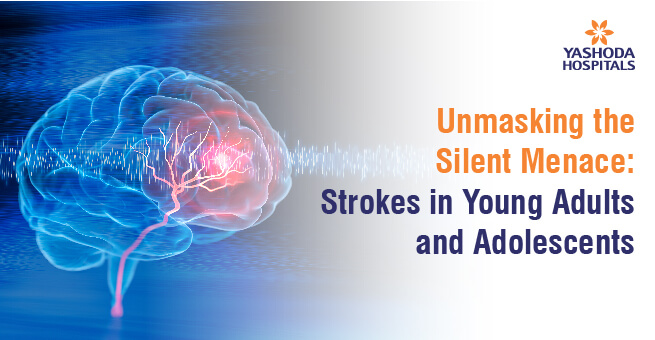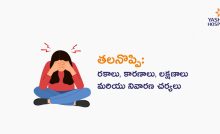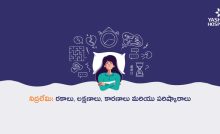

Stroke is widespread not only in the elderly but also in younger persons, accounting for 15% of ischemic stroke cases. These rising vascular risk factors lead to ischemic strokes, recurrence, post-stroke mortality, and impose a disproportionate economic burden during their prime years. Detecting strokes early is tough due to limited awareness and the rarity of strokes compared to mimics. So, proper education and proactive healthcare measures can pave the way for a healthier future.
Stroke Statistics in India
Before delving into the various aspects of strokes, let’s look at some sobering statistics. According to the Indian Stroke Association, stroke is the second leading cause of death in India, and it affects individuals across all age groups. Here are some key statistics:
- India records over 1.8 million cases of stroke each year.
- Nearly 600,000 people die from stroke annually in the country.
- Strokes are responsible for a considerable percentage of disabilities in India, significantly impacting the quality of life.


Prevalence Among the Young Adults and Adolescents
According to recent research, an alarming rise in strokes among young adults, adolescents, and even pediatric cases has been noted—an issue that often goes unnoticed.
Unseen Threat: Pediatric Strokes
Pediatric strokes, affecting children aged 1 to 18, often go unnoticed, leading to severe long-term consequences. Common causes include congenital heart diseases, sickle cell anemia, and infections. It can significantly impact cognitive development, motor skills, and overall quality of life in children. Early diagnosis and rehabilitation, especially tailored for this age range, play a crucial role in significantly improving outcomes for young stroke survivors.
Strokes in Young Males vs. Young Females
Strokes in young adults may exhibit gender differences in terms of risk factors and outcomes. Young males often have a higher prevalence of stroke due to risk factors such as smoking, excessive alcohol consumption, and a generally less healthy lifestyle. Young females, on the other hand, might be more susceptible to stroke during pregnancy or while using hormonal birth control methods. It is essential to be aware of these gender-specific risk factors and adapt preventive strategies accordingly.
Types and Common Stroke Symptoms:
- Ischemic Stroke: The most common type, caused by a blood clot or plaque blocking a brain blood vessel. Subtypes are thrombotic (clot in the brain’s vessels) and embolic (clot from another part of the body).
- Hemorrhagic Stroke: Rare, but when it happens, it hits more severely, resulting in a ruptured brain blood vessel. Subtypes are intracerebral (bleeding within the brain) and subarachnoid (bleeding on the brain’s surface).
- Transient Ischemic Attack (TIA): Even though these are sometimes referred to as “mini-strokes,” or disturbances in blood flow to the brain that result in transient symptoms that usually go away in a day or two, it’s important to understand that TIAs can also be warning indicators for an elevated risk of a more serious stroke.
Recognizing the symptoms of a stroke is crucial for seeking prompt medical attention, as early intervention can greatly improve the outcome. The common signs and symptoms of a stroke include:
- Sudden numbness or weakness, particularly on one side of the body.
- Difficulty speaking or understanding speech.
- Sudden vision problems in one or both eyes.
- Severe headache with no known cause.
- Trouble walking, dizziness, loss of balance, or coordination.
Stroke mimics may include seizures (fits), acute vestibular syndrome, migraine (infection of the ear, nose, and throat), brain tumors, toxic metabolic encephalopathy, and Guillain-Barré syndrome, among others. These conditions may manifest with negative, positive, or isolated symptoms and can affect various areas of the brain, such as the brainstem, cerebellum, temporal lobe, occipital lobe, parietal lobe, and frontal lobe.
- Brainstem Symptoms: Dizziness, vertigo, difficulty swallowing, double vision, slurred speech, weakness in the face and limbs, altered consciousness, difficulty with breathing and heart rate regulation.
- Cerebellum Symptoms: Incoordination, difficulty with balance and walking, tremors, slurred speech, abnormal eye movements, muscle weakness, and difficulties with fine motor skills.
- Temporal Lobe Symptoms: Auditory hallucinations, changes in taste and smell perception, memory problems, language difficulties, and complex partial seizures.
- Occipital Lobe Symptoms: Visual disturbances, such as visual hallucinations, loss of vision (partial or complete), difficulty recognizing objects or faces, and alterations in visual perception.
- Parietal Lobe Symptoms: Sensory disturbances, difficulty with spatial awareness, language difficulties (if in the dominant hemisphere), trouble with writing, reading, and mathematics, and sensory seizures.
Frontal Lobe Symptoms: Changes in personality and behavior, impaired decision-making and judgment, motor deficits, difficulty with speech production (if in the dominant hemisphere), and changes in social and emotional functioning.
Feel sudden numbness, confusion, or difficulty speaking? Act fast, it could be a stroke.
FAST: Spotting Stroke Symptoms
- F: Face Drooping
- A: Arm Weakness
- S: Speech Difficulty
- T: Time to Call 105910
Preventive Steps
Preventing strokes involves addressing modifiable risk factors and making healthy choices. Here are essential steps for stroke prevention:
- Manage high blood pressure: Regularly monitor your blood pressure and take prescribed medications as directed by a healthcare provider.
- Maintain a healthy diet: Consume a balanced diet rich in fruits, vegetables, whole grains, lean proteins, and low in saturated fats and sodium.
- Stay physically active: Engage in regular exercise to promote cardiovascular health and maintain a healthy weight, aiming for 3-5 sessions per week.
- Quit smoking: Smoking is a major risk factor for strokes, so seek support to quit this harmful habit.
- Limit alcohol consumption: If you drink alcohol, do so in moderation.
- Control diabetes: Manage blood sugar levels through medication, diet, and lifestyle modifications.
- Prevent or manage heart conditions: Control conditions such as atrial fibrillation, which can increase stroke risk.
- Seek medical attention for other risk factors: High cholesterol, sleep apnea, and other medical conditions should be managed under the guidance of a healthcare provider.
- Recognize and respond to stroke symptoms: Be aware of the signs of a stroke and call 108 immediately if you or someone you know experiences them.
Screening and Its Importance:
Screening Options:
- Cerebral Arterial Imaging: Non-invasive techniques like MRA, CTA, and Doppler ultrasound examine brain blood vessels to detect blockages or abnormalities.
- Digital subtraction angiography of the head and neck: Involves injecting contrast dye to create detailed X-ray images of head and neck vessels, identifying issues like aneurysms or blockages.
- Bilateral carotid artery duplex ultrasound: Non-invasive ultrasound assesses carotid arteries in the neck for blockages or plaque buildup affecting brain blood supply
- 24-hour Holter monitoring: Continuous 24-hour ECG recording detects irregular heart rhythms, helping identify potential sources of small blood clots that can lead to silent strokes
Importance of Screening: Screening for brain strokes is vital for early detection and prompt intervention. It helps prevent long-term damage, disabilities, and improves overall neurological health by identifying risk factors and warning signs early on.
- Blood Pressure Monitoring: Regularly check your blood pressure, and consult a healthcare professional if it’s consistently high.
- Cholesterol Check: Periodically assess your cholesterol levels and manage them with your doctor’s guidance.
- Diabetes Testing: Monitor your blood sugar levels, especially if you have a family history of diabetes.
- Carotid Ultrasound: If recommended by a healthcare provider, undergo this test to assess the carotid arteries for plaque buildup.
Understanding the different types of strokes, recognizing the symptoms, and taking preventative measures are essential for reducing the risk of this potentially devastating condition. By making healthy lifestyle choices and managing risk factors, both young and older adults can significantly decrease their chances of experiencing a stroke and its associated complications. Remember that time is of the essence in stroke care, so act quickly if you or someone around you displays stroke symptoms to maximize the chances of a positive outcome.
References:
- What Is a Stroke? https://www.nhlbi.nih.gov/health/stroke
- Symptoms of stroke https://www.mayoclinic.org/diseases-conditions/stroke/symptoms-causes/syc-20350113
- About Stroke https://www.cdc.gov/stroke/about.htm
- FAST: Spotting Stroke Symptoms https://my.clevelandclinic.org/health/diseases/5601-stroke
Recent Posts
రక్తదానం: అర్హులు, ప్రయోజనాలు మరియు అపోహల గురించి సంక్షిప్త సమాచారం
మనిషి బ్రతకడానికి ప్రాణవాయువు ఆక్సిజన్ ఎంత అవసరమో రక్తం కూడా అంతే అవసరం. రక్తం, శరీరంలోని ప్రతి కణంతో అనుక్షణం…
నరాల సంబంధిత వ్యాధుల రకాలు, కారణాలు, లక్షణాలు & నిర్ధారణ పరీక్షలు
నరాల సంబంధిత రుగ్మతలు అంటే నాడీ వ్యవస్థ మొత్తం మీద ప్రభావం చూపే వ్యాధులు. నాడీ సంబంధిత పరిస్థితులు ఇప్పుడు…
Endovascular Surgery: Minimally Invasive Solution to Vascular Disease
Endovascular surgery is a revolutionary advancement in medical technology wherein doctors can treat almost any…
పల్మోనరీ ఎంబోలిజం: లక్షణాలు, కారణాలు మరియు చికిత్స విధానాలు
పల్మోనరీ ఎంబోలిజం అనేది చికిత్స మీద ఆధారపడిన ఒక తీవ్రమైన పరిస్థితి, ఇది సాధారణంగా ఊపిరితిత్తులకు ప్రయాణించే రక్తంలో గడ్డకట్టడం…
Rhinoplasty: Understanding the Nose Surgery Procedure and Its Benefits
Rhinoplasty is commonly known as a nose job that is usually designed to reshape a…
Is Spine Surgery Safe? Exploring Minimally Invasive Techniques and Recovery
Spine surgery is a source of fear for most people, yet it has undergone significant…

